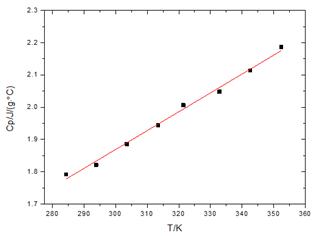XIATECH testing center provides an extensive breadth of testing services of thermophysical property measurements, including the transport properties and thermodynamic properties. Transport properties of fluids, such as thermal conductivity, heat capacity, viscosity, are the basic information on the designing of heat transfer vessel, and the researches on heat transfer mechanism and efficiency.
XIATECH testing center equipped with professional laboratory staffs and measurement devices, provides accurate isobaric heat capacity data of liquids in the temperature range from -30 ¡æ to 120 ¡æ. For other temperature range, the user can also consult our senior technical staff.
For more information about THW and thermal conductivity meter, please visit HC2000 .
Test service
Measurement method: Flow calorimetry & Adiabatic calorimeter
Range: 0 ~10.0 kJ/£¨kg¡¤K£©
Temperature Range: -30 ¡æ~120 ¡æ
Accuracy: ¡À 2.0 %
Sample amount: > 500 mL
Test Sample
all kinds of pure and mixture fluids, including polar and non-polar liquids and gas:
Refrigerant: R134a, R12, R22, R123, dimethyl ether and etc.;
Oil: thermal oil, gasoline, kerosene, diesel oil, lubricating oil, compressor oil, refrigeration oil, silicone oil, etc.;
Nanofluids: Alumina nanofluids, graphite nanofluids, Fe3O4 nanofluids, ZrO2 nano-fluids;
Chemicals: water, toluene, alcohols, ionic liquids, salt solutions, etc.;
Measurable solids including various types of rubber, plastics, chemical fiber, rock, coal, metals and so on.
Application(Heat capacity measurement of lubricating oil)
The isobaric heat capacities of lubricating oil were measured in the temperature range of 283K to 353K at a increment of 10K by the HC2000, vacuum discharge system and temperature module of -30~120¡æ.
Experimental results are showed in Figure 1, from which it can see that the heat capacities increase as the temperature increased.

Fig 1 heat capacity VS temperature of lubricating oil
For more applications, please visit Solutions

